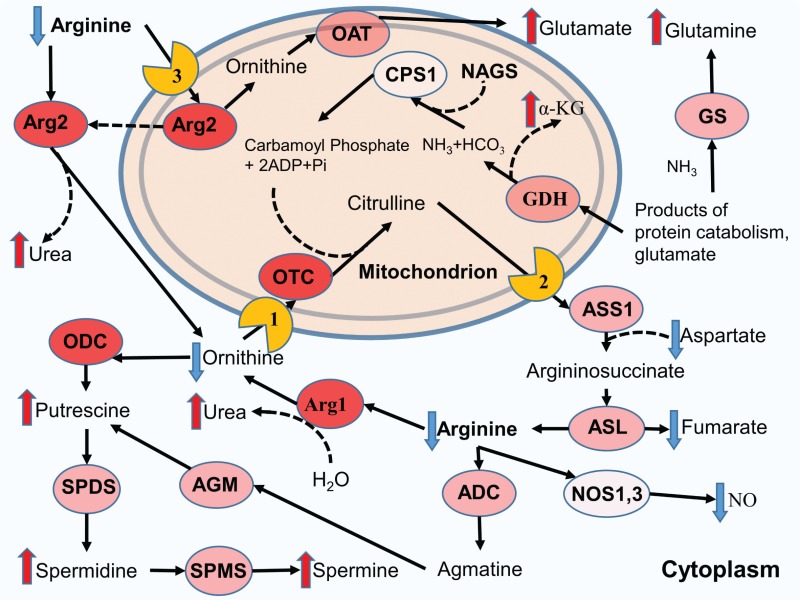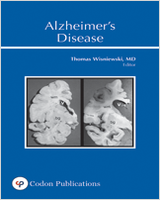Arginine metabolic pathways and their deviations in AD brain. Arginine is primary substrate metabolized by nitric oxide synthases (NOS1 and NOS3 under physiological conditions), arginase 1 (Arg1) and arginine decarboxylase (ADC). Arginase 2 (Arg2) plays a role in extra-urea cycle arginine metabolism. Arginine is cleaved by arginase to form urea and ornithine at the final step of the urea cycle. The urea cycle consists of N-acetylglutamate synthase (NAGS), which is an allosteric cofactor for catalytic enzyme carbamoyl phosphate synthase (CPS1), and other four catalytic enzymes: ornithine transcarbamylase (OTC), argininosuccinate synthetase (ASS1), argininosuccinate lyase (ASL), and arginase 1 (Arg1). NAGS, CPS1 and OTC are localized in the mitochondria, while ASS1, ASL, and ARG1 are in the cytosol. Two enzymes: OTC and CPS1 are present in very low concentrations in the human brain. As a result, the brain urea cycle is not efficient and to remove ammonia and relies on alternative glutamine synthesis by glutamine synthetase (GS). Glutamine concentration rises in AD brain. Glutamate dehydrogenase (GDH) catalyzes the deamination of glutamate to α-ketoglutarate (α-KG), which concentrations also increase in AD brain, and ammonia (NH3). The mitochondrial ornithine transporter (1), citrin (2), and the mitochondrial cationic amino acid transporter type 1 (3). Red arrows indicate elevated levels; blue arrows designate reduced ones. The intensity of the circles’ color reflects the level of activation (arbitrary scale). Argininosuccinate lyase (ASL), argininosuccinate synthetase (ASS), nitric oxide (NO), ornithine decarboxylase (ODC), spermidine synthase (SPDS), spermine synthase (SPMS), agmatinase (AGM), ornithine aminotransferase (OAT).

